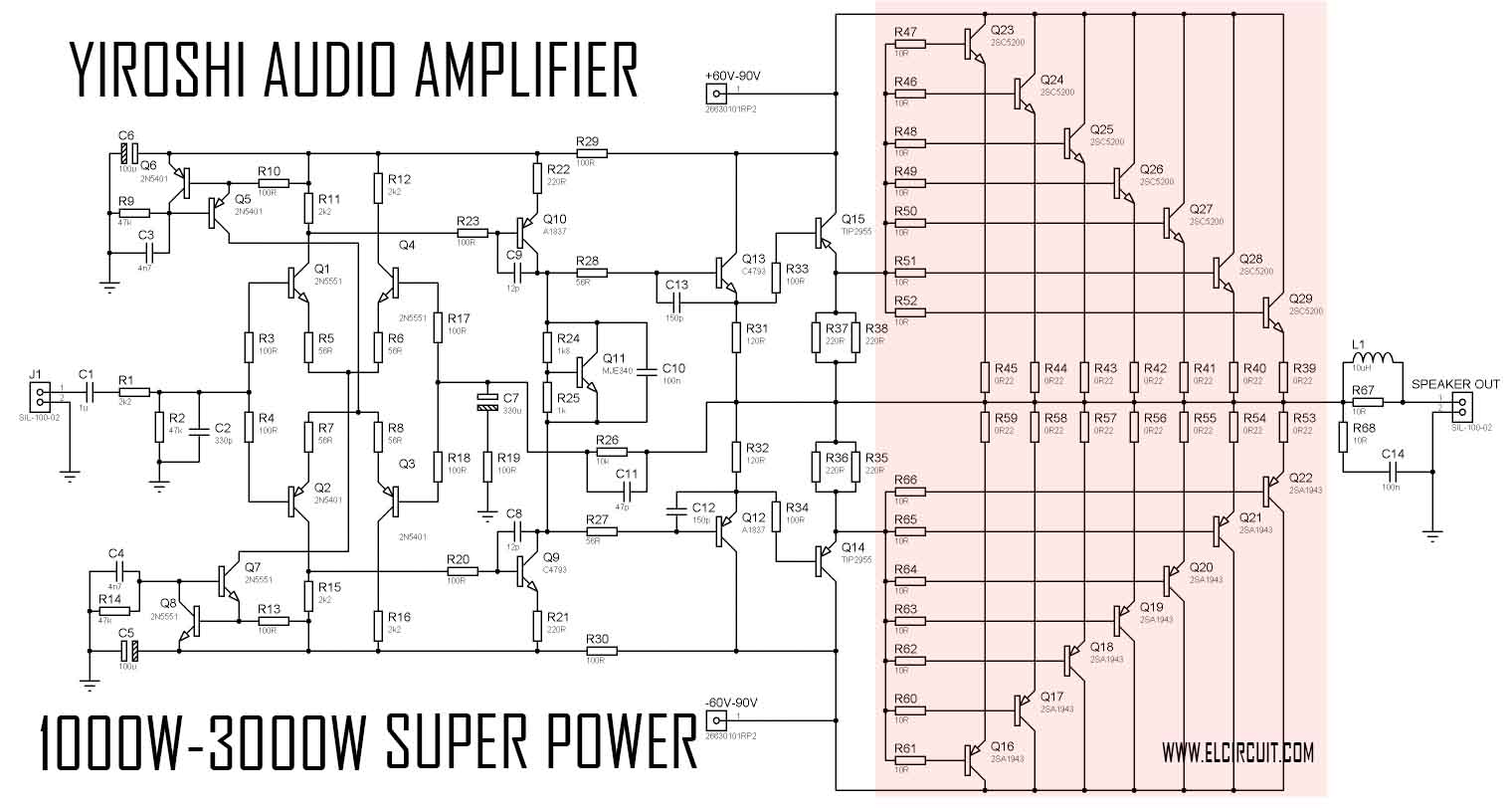Skema Rangkaian Driver Power Amplifier
The stereo signals coming from the line outputs of the car radio amplifier are mixed at the input and, after the Level Control, the signal enters the buffer IC1A and can be phase reversed by means of SW1. This control can be useful to allow the subwoofer to be in phase with the loudspeakers of the existing car radio. Then, a 12dB/octave variable frequency Low Pass filter built around IC1B, Q1 and related components follows, allowing to adjust precisely the low pass frequency from 70 to 150Hz. Q2, R17 and C9 form a simple dc voltage stabilizer for the input and filter circuitry, useful to avoid positive rail interaction from the power amplifier to low level sections.
I've made gainclone amplifier that uses a LM3886 chip. It's one of the best compact HiFi amplifiers.

Nov 7, 2005 - The TDA8920B is a high efficiency class-D audio power amplifier. Handshake block and driver circuits for both the high side and low side. PCB Driver Power Amp Namec Circuit Board Design, Diy Amplifier, Electronic Kits. Rangkaian power amplifier Micron 50 Watt Audio Amplifier, Circuit, Solar.

It is a Class AB-A (conjugate) amplifier that has a fully symmetrical structure (push-pull), this mean that the sine waves produced, will produce a +, - output. A 25 volt (+/- Dual Rail), 5 Ampere, toroidal transformer was used to supply electricity for the amp. There's also a PCB Layout provided for the project. I found an old CPU processor attached to a gorgeous heatsink & fan, I recycled both of them and drilled holes for it to be mounted on the LM3886 chips. Specifications: - Maximum Output Power: 68W RMS - 108W Peak - Frequency Response: 7Hz-25kHz (Filtered ⇒Linkwitz) - THD:%0.03 at 60W - SNR: 110dB at 60 W - 92.5dB at 1W - Output Class: AB-A (Conjugate) - Auxiliary Features: DC/AC Short circuit protection and thermal protection. - Working Voltage/Power: 12-94 Volts (Dual Rail), 1-10 Amperes - Audio Features: Input Mute Funtion (100% silent = no input) Too bad I had a late documentation, that's why I only have a few pictures of the steps and procedures.
Due to the late documentation, I had to get images from the source. Some of the pictures are not mine, there are no claims that the PCB designs are mine nor the diagrams, although there where some modifications made by me for the amp. What Is A Gainclone? Back in 1999, relatively unknown manufacturer released the 'Gaincard' to rave reviews.
Download wii brick blocker. So you can run the brick blocker if you like, but there's no advantage (and also no harm). Personally, I keep updated via the wireless to the latest Wii firmware, and only download games for my region. A Wii DVD consists of 3 partitions, one of them is the update. WiiBrickBlocker requires the user to have.NET Framework 2.0. And so you don't risk too brick. To download WII BRICK BLOCKER DESCARGAR, click on the Download button. Por ahi en un comentario dice que si se cargan los backups desde usb, no blofker ejecutan los updates, con lo que se reduciria el riesgo de bricks.
It immediately caused controversy because it was based around a $5 power amplifier IC (Integrated Circuit), yet a typical setup would cost you around $3300. A Gainclone in the other hand refers to any DIY amplifier that uses a LM3875/ LM3886 as it's main component. What's So Special About It? The gainclone only uses small amounts of space, it's built with a minimal supply of components, yet giving a great HiFi result. It beats the hell out of those modern HiFi amps, it produces 2x68 watts of power, with a Total Harmonic Distortion of 0.03%THD and built on a 2x3 PCB board! So why doesn't the audio industry use it? I'm not really sure.
All of these sounds 'too good to be true', I recommend this project for those who are still starting on their DIY HiFi amp hobby, since it only uses some few components. What's A Power Amp? A power amp is a amplifier with no preamp, volume control, tone control, or any auxiliary devices attached to it. It's just pure simplicity. Coming Soon: DIY HiFi Preamp With Tone Control (Works With The Gainclone). I can tell that parts in the US are highly expensive. Here in the Philippines a typical resistor would cost 0.25 centavos ($0.0006), while in america, a typical resistor would cost $1 each.